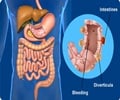Brain's ability to regulate body weight depends on a novel form of signaling in the brain's hunger circuit via antenna-like structures on neurons.

‘Genetics contribute between 40 and 70 percent to people's inclination towards unhealthy weight gain. Primary cilia play important role in many forms of hormonal signaling in the body.’





Primary cilia are distinct from motile cilia, the finger-like projections that act as a sort of cellular conveyer belt, with functions such as removing debris from the lungs and windpipe. Immotile primary cilia were once thought to be vestigial, like a cellular appendix, but in the past decade, research at UCSF and elsewhere has revealed that these structures play a key role in many forms of hormonal signaling in the body. Now the new UCSF study -- published January 8, 2018 in Nature Genetics -- shows that primary cilia also play a crucial role in signaling within the brain. Neuroscientists are accustomed to thinking of brain signaling in terms of direct chemical or electrical communication among neurons at sites called synapses, but the new findings reveal that chemical signaling at primary cilia may also play an important, and previously overlooked role. In addition, the findings suggest potential new therapeutic approaches to the growing global obesity epidemic, the researchers say.
"We’re building a unified understanding of the human genetics of obesity," said senior author Christian Vaisse, MD, PhD, a professor in the Diabetes Center at UCSF and a member of the UCSF Institute for Human Genetics. "Until recently, many obesity researchers had barely heard of primary cilia, but that’s going to change."
Key signaling proteins in brain’s hunger circuit meet in primary cilia
Since the 1990s, geneticists have shown that most of the genetic alterations that contribute to severe obesity in humans appear to disrupt a network of neurons within the brain’s hypothalamus. This "hunger circuit" monitors levels of leptin, a hormone secreted by fat cells, and uses this information to adjust appetite and energy expenditure to maintain a stable weight. People (and mice) with mutations in the leptin gene itself, or in neural genes involved in detecting and responding to leptin, cannot detect when their body has already got plenty of fat, and constantly eat as if they were starving.
Advertisement
In recent years, Vaisse and his team have demonstrated that mutations in a particular gene involved in the hunger circuit -- called MC4R -- are the most common single-gene driver of obesity in humans, accounting for 3 to 5 percent of all cases of severe obesity (defined as having a body mass index greater than 40). Vaisse’s team have shown that the MC4R protein -- a receptor molecule that detects chemical signals produced by the cells in the arcuate nucleus -- is present in a subset of PVN cells and appears to be critical to these neurons’ ability to respond to high leptin levels by reducing appetite. However, the researchers still knew very little about these neurons or how they work.
Advertisement
In the new study, Vaisse’s team collaborated with Reiter as well as neuroscientist Mark von Zastrow, MD, PhD, a professor of psychiatry at UCSF, to study whether there might be a link between how MC4R mutations and cilia defects drive obesity.
They began by fluorescently tagging the MC4R protein in the brains of laboratory mice. When the researchers examined the newly visible MC4R-expressing neurons, they found that the MC4R protein was uniquely concentrated in the cells’ primary cilia, suggesting that its key appetite-regulating function may occur there. Indeed, when the researchers caused mice to express the mutated versions of the human MC4R gene seen in patients with extreme obesity, they found that the MC4R protein failed to reach the cilia.
These imaging studies also examined a protein called adenylyl cyclase 3 (ADCY3), which, like MC4R, localizes to primary cilia and has been recently associated with obesity. This protein is known to mediate signaling through proteins like MC4R, so to test whether these two proteins interact in the primary cilia of MC4R-expressing neurons in the PVN, the researchers blocked ADCY3 function in these cells in mice, and found that the animals significantly increased their food consumption and began to exhibit signs of obesity.
The researchers conclude that ADCY3 and MC4R must come together in the primary cilia of PVN neurons to allow these cells to detect signals from the arcuate nucleus indicating high body-fat levels and to respond appropriately by reducing appetite. This suggests that if genetic mutations prevent MC4R from getting to the cilia, or if other genetic defects damage the primary cilium itself, the brain has no way to pull the emergency brake on weight gain.
"It’s exciting how much progress this field has made," Vaisse said. "In the ’90s, we were asking whether or not obesity is genetic; a decade ago we were discovering that most obesity risk factors primarily impact the leptin circuit in the brain; and now we are on the verge of understanding how defects in this specific subcellular structure of a particular subset of hypothalamic neurons drives weight gain and obesity."
Research highlights important role of cilia in neuronal signaling in the brain.
The new study raises the possibility of developing treatments that could improve appetite control in people with obesity by modifying signaling at the primary cilia of MC4R-expressing neurons. However, the development of treatments may still be a long way off, Vaisse cautioned. "We still know so little about the primary cilium, and particularly how it is involved in signaling within these particular neurons. We yet don’t know what we might do to fix it when it is broken."
The story also highlights an intriguing distinction between how the hypothalamus controls appetite on short versus long timescales. As UCSF’s Zachary Knight, PhD, has shown, the same hypothalamic neurons that reduce appetite when the body’s fat stores are in good shape are also responsible for tamping down your hunger for dinner when you get your meal. The emerging picture, Vaisse says, is that fast signaling at synapses between hypothalamic neurons is responsible for making sure you only eat when you’re hungry, while slower signaling sensed by the primary cilia of the same cells controls your body’s long-term energy balance between calorie intake and expenditure.
"I don’t think anyone was thinking that MC4R, this neurotransmitter receptor associated with satiety, might not be functioning at synapses, but at cilia," Reiter said. "By studying rare diseases, we have discovered a new biological principle by which neurons can communicate.
Source-Eurekalert















